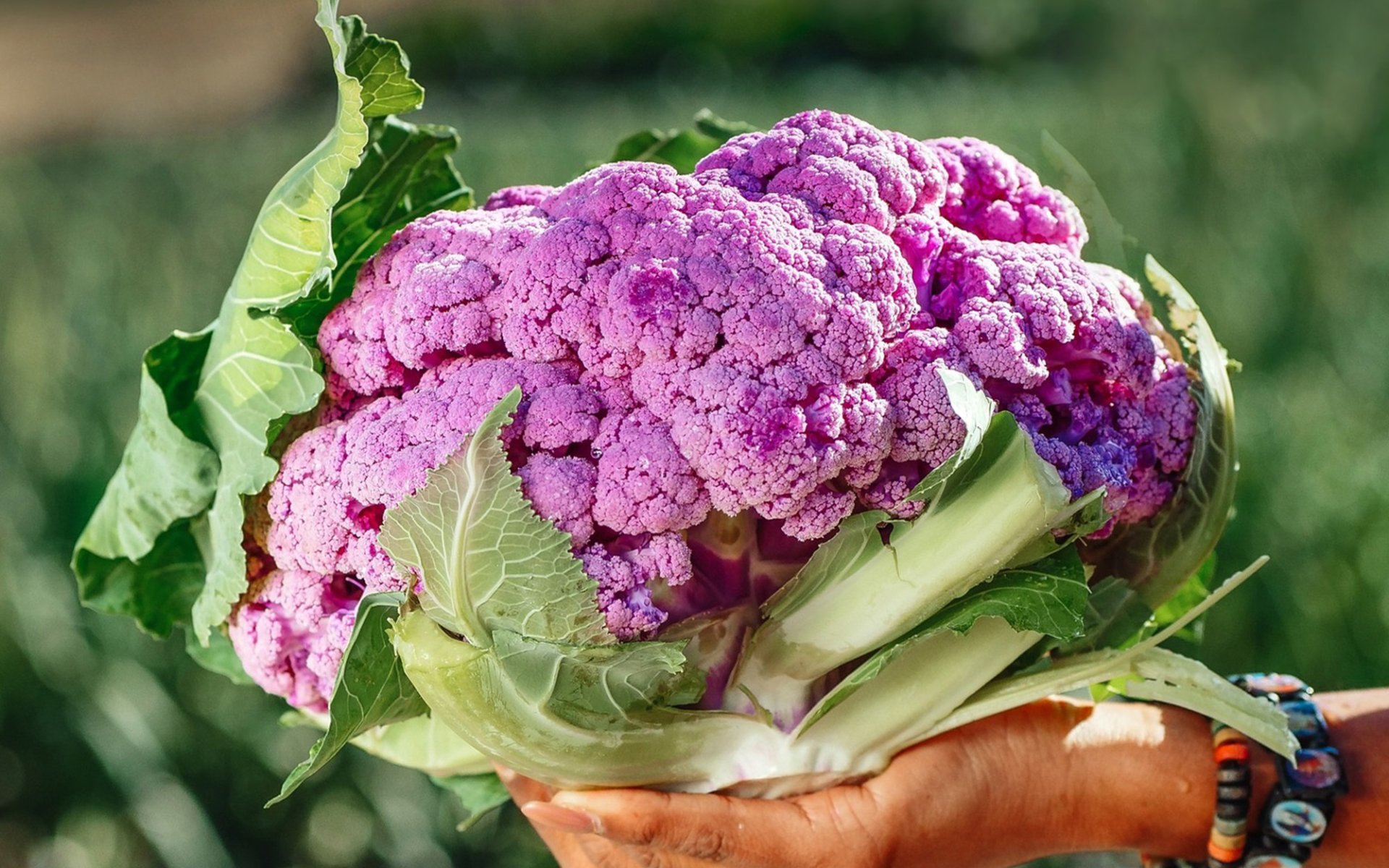Purple Cauliflower

When it comes to cauliflower, many are likely familiar with it, as it's a popular vegetable long used in Thai kitchens. However, most Thais are accustomed to white cauliflower. The purple cauliflower, which has only recently become common, is another variety developed in the late 20th century.
Purple cauliflower is a unique variety that is gaining increasing popularity among health-conscious consumers and food enthusiasts. With its vibrant hue and distinct flavor, it's also richer in nutrients than white cauliflower. Therefore, purple cauliflower is likely to become even more popular.
History of Cauliflower
Before the discovery of purple cauliflower, the history of cauliflower dates back to the 1st century. The common white variety was first documented in Pliny the Elder's Natural History, originating in the northeastern Mediterranean region and introduced to Europe, Asia, and North America in the early 19th century.
Later, in the 20th century, orange cauliflower was discovered growing naturally in North American fields and was selectively bred by scientists to improve its properties as a new crop variety. Although orange cauliflower was not widely adopted at the time, scientists continued to select and cross-breed cauliflower until they finally developed the purple cauliflower we see today.
The Purple Power: Anthocyanins
What gives purple cauliflower its color is anthocyanin. This compound can be found in all fruits and vegetables with blue or purple hues and is a naturally occurring phytochemical. It is said to be a powerful antioxidant that helps protect the body from free radicals, which are molecules that can lead to various chronic diseases such as cancer, heart disease, and Alzheimer's disease. Furthermore, research also indicates that anthocyanins may possess anti-inflammatory and certain anti-cancer properties, leading to campaigns promoting purple cauliflower as a health-boosting food supplement.
Difference Between Purple Cauliflower and White Cauliflower
The clear distinction between purple and white cauliflower is that purple cauliflower is often hailed as being more nutritious than its white counterpart. This is due to the presence of anthocyanins, which give it its purple color and act as antioxidants, contributing to the fight against various chronic diseases. Although both varieties have similar tastes, some say that purple cauliflower is slightly sweeter than white cauliflower. However, this doesn't mean white cauliflower is without benefits. Each type of cauliflower has its unique advantages and can be used interchangeably, as purple cauliflower can sometimes be hard to find in regular stores.
Culinary Uses and Food Trends
In terms of culinary applications, purple cauliflower can be used in a wide variety of dishes, just like white cauliflower. It can be stir-fried, grilled, steamed, or even consumed raw to preserve its nutritional value. The sweet and nutty flavor of purple cauliflower pairs well with many vegetables, as well as grains and other proteins, making it an excellent ingredient for salads and healthy beverages.
Beyond cooking, purple cauliflower is also a popular ingredient for food aesthetics. Its beautiful color makes dishes more appealing and striking, making it a favorite among chefs. Purple cauliflower also exhibits different shades of purple depending on the amount of sunlight it receives. This is because anthocyanins are sensitive to sunlight; stronger sun exposure leads to a darker purple color, while less sunlight results in a lighter purple hue.
Recently, the Monochromatic Food Trend has gained viral popularity, especially in Western countries. This technique is another form of food aesthetics where various ingredients of the same color are paired together on a single plate. For example, purple cauliflower, purple potatoes, purple corn, purple asparagus, and other ingredients of the same color are combined in one dish. Every time such a dish is arranged, people often take photos and upload them to Instagram.
For those who want to try creating a monochromatic healthy meal, you can find purple cauliflower to pair with other purple ingredients at all Rimping branches.


